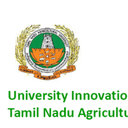In vitro somatic embryogenesis from cell suspension cultures of cowpea [Vigna unguiculata (L.) Walp].
Mots clés
Abstrait
We report, an efficient protocol for plantlet regeneration from the cell suspension cultures of cowpea through somatic embryogenesis. Primary leaf-derived, embryogenic calli initiated in MMS [MS salts (Murashige and Skoog 1962) with B5 (Gamborg et al. 1968) vitamins] medium containing 2,4-Dichlorophenoxyacetic acid (2,4-D), casein hydrolysate (CH), and L: -Glutamic acid-5-amide (Gln). Fast-growing embryogenic cell suspensions were established in 0.5 mg l(-1) 2,4-D, which resulted in the highest recovery of early stages of somatic embryos in liquid MMS medium. Embryo development was asynchronous and strongly influenced by the 2,4-D concentration. Mature monocotyledonary-stage somatic embryos were induced in liquid B5 medium containing 0.1 mg l(-1) 2,4-D, 20 mg l(-1) L: -Proline (Pro), 5 muM Abscisic acid (ABA), and 2% mannitol. B5 medium was found superior for the maturation of somatic embryos compared to MS and MMS media. The importance of duration (5 d) for effective maturation of somatic embryos is demonstrated. A reduction in the 2,4-D level in suspensions increased the somatic embryo induction and maturation with decreased abnormalities. Sucrose was found to be the best carbon source for callus induction while mannitol for embryo maturation and maltose for embryo germination. Extension of hypocotyls and complete development of plantlet was achieved in half-strength B5 medium supplemented with 3% maltose, 2500 mg l(-1) potassium nitrate, and 0.05 mg l(-1) thidiazuron (TDZ) with 32% regeneration frequency. Field-established plants were morphologically normal and fertile. This regeneration protocol assures a high frequency of embryo induction, maturation, and plantlet conversion.


